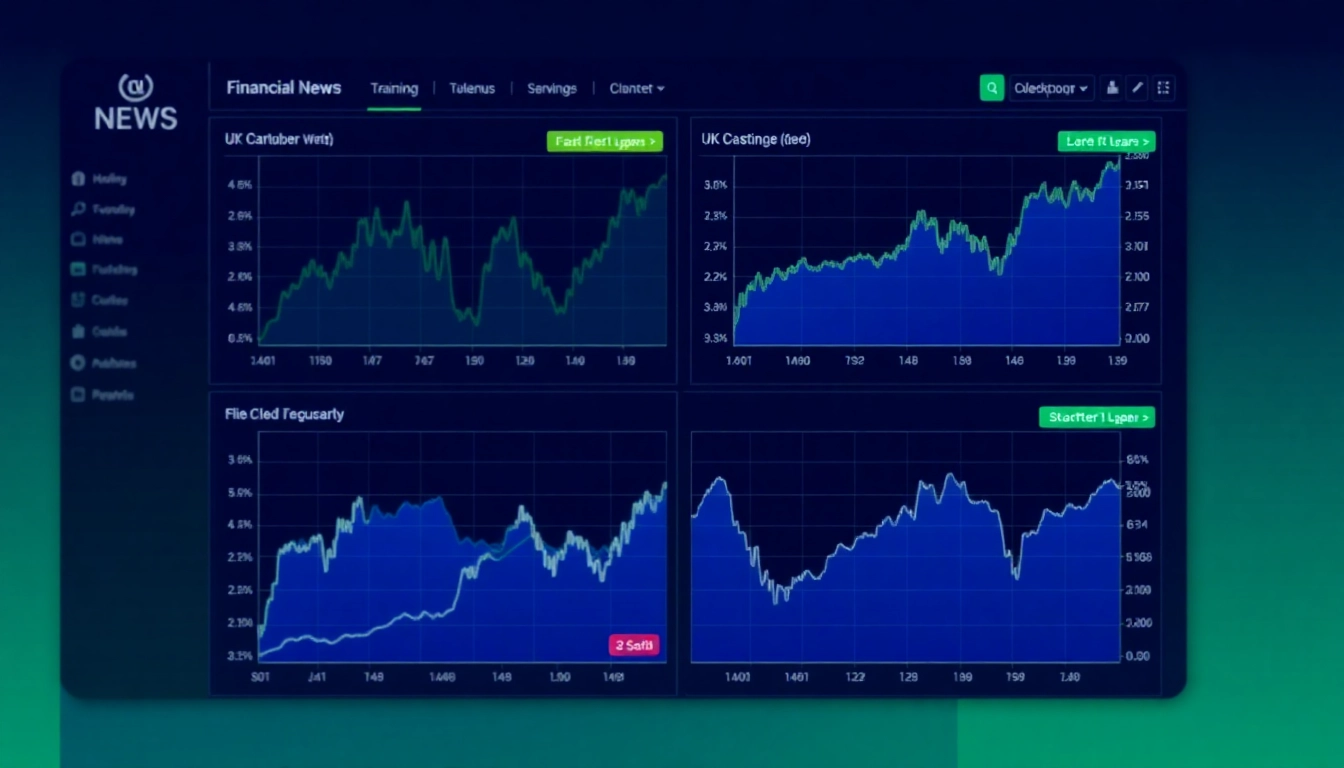
Understanding the Current Landscape of UK Stock Market News
The UK stock market remains a vital part of the global financial ecosystem, reflecting both domestic economic conditions and international market trends. Daily UK Stock Market News serve as essential indicators for investors aiming to make informed decisions. These updates provide real-time insights into market movements, sector performances, and emerging opportunities, making them indispensable for both individual and institutional investors. Staying abreast of these developments helps stakeholders respond swiftly to market shifts, manage risks effectively, and capitalize on emerging trends.
Key Factors Influencing the UK Stock Market
Economic Indicators and Policy Changes
At the heart of UK stock market fluctuations are macroeconomic indicators such as GDP growth rates, inflation figures, unemployment rates, and consumer spending patterns. Policy decisions from the Bank of England, including interest rate adjustments and quantitative easing measures, directly influence investor confidence and sector outlooks. Recently, the anticipation of an interest rate cut has driven gold prices to a four-month high, reflecting global monetary policy expectations that ripple into UK markets.
Global Events and Their Effects on UK Stocks
International developments like Chinese economic performance, US rate-cut bets, and geopolitical tensions can significantly impact the UK equity space. For instance, strong gains in Chinese indices and rising Asia stocks have provided a positive backdrop for global markets, including London. Conversely, bond pressures and concerns over global trade policies can introduce volatility, requiring investors to stay vigilant and adapt their strategies accordingly.
Market Sentiment and Investor Confidence
Investor sentiment, often driven by news headlines, economic forecasts, and geopolitical signals, greatly influences market trajectories. The recent steady rise of European stocks, coupled with bond underperformance, highlights cautious optimism amid underlying volatility. Metrics such as the VIX index or investor surveys provide real-time gauges of confidence levels, guiding strategic decisions and risk management approaches.
Analyzing Market Trends and Data
Utilizing Technical Analysis for Stock Predictions
Technical analysis involves examining stock charts, volume trends, and technical indicators to forecast future price movements. For example, traders might look for patterns like head and shoulders, moving average crossovers, or RSI levels to identify potential entry or exit points. Such tools are invaluable in navigating volatile periods, like bonds under pressure or gold surging on rate-cut expectations.
Fundamental Analysis: Evaluating Company Performance
Fundamental analysis scrutinizes financial statements, earnings reports, and valuation metrics such as P/E ratios to determine a company’s intrinsic value. During periods of geopolitical or economic uncertainty, strong fundamentals—like robust cash flow or resilient profit margins—can make specific stocks more appealing despite broader market fluctuations.
Interpreting Market Data and News Signals
Market data, including trading volumes and price movements, combined with news signals on policy shifts or sector developments, provide a comprehensive view. For instance, positive manufacturing data in Europe has contributed to a slight uptick in the STOXX 600, emphasizing the importance of integrating multiple data sources for sound investment decisions.
Strategies for Investors Based on UK Stock Market News
Long-term vs Short-term Investment Approaches
Long-term investors prioritize fundamentals and growth potential, often ignoring daily fluctuations driven by transient news. Conversely, traders may capitalize on short-term volatility, employing strategies such as swing trading or day trading. Recognizing when to adopt each approach can dramatically influence portfolio outcomes, especially in a dynamic environment shaped by global geopolitical and economic signals.
Risk Management Amid Market Volatility
Managing risk involves diversification across sectors and asset classes, setting stop-loss orders, and maintaining liquidity buffers. For example, during periods where bonds are under pressure, shifting towards commodities like gold—now at a four-month high—can serve as a hedge against market downturns and inflation fears.
Diversification to Enhance Portfolio Resilience
Incorporating a mix of equities, bonds, precious metals, and alternative assets like cannabis or crypto can mitigate risks. With the cannabis industry valued at over $150 billion, emerging sectors offer significant growth prospects, enabling investors to build resilient portfolios that withstand market shocks.
Future Outlook and Opportunities in UK Stocks
Emerging Sectors and Growth Areas
Technological innovation, renewable energy, healthcare, and legalized industries such as cannabis present promising opportunities. Regulatory changes in Germany and Florida have created potential for growth in these sectors. The UK market, with its robust financial infrastructure and innovation hubs, is poised to benefit from these global shifts.
Upcoming Regulatory and Economic Changes
Policy developments, including green energy mandates and digital asset regulations, can alter market trajectories. For instance, pension funds and insurers planning to increase renewable energy investments indicate a strategic pivot towards sustainable assets, aligning with global sustainability trends.
How to Stay Informed and Adapt Investment Strategies
Consistent monitoring of market news, economic releases, and sector reports is essential. Engaging with comprehensive financial platforms, subscribing to expert analysis, and leveraging data-driven tools help investors adapt proactively rather than reactively, securing advantages in an ever-evolving landscape.





